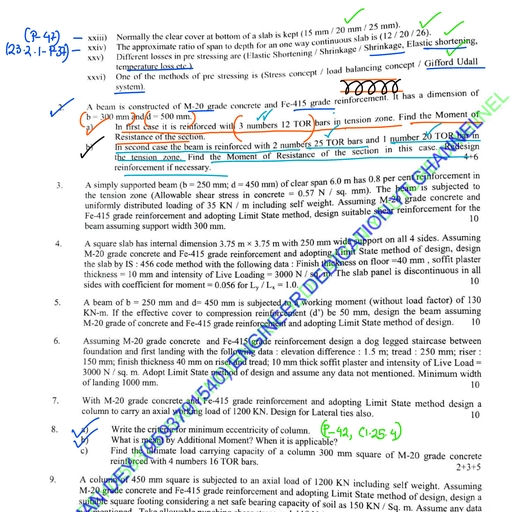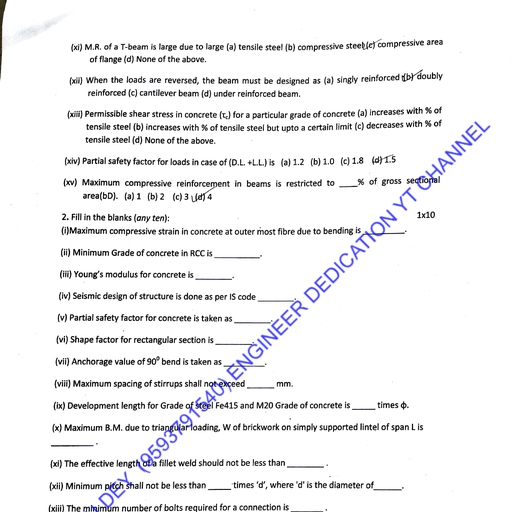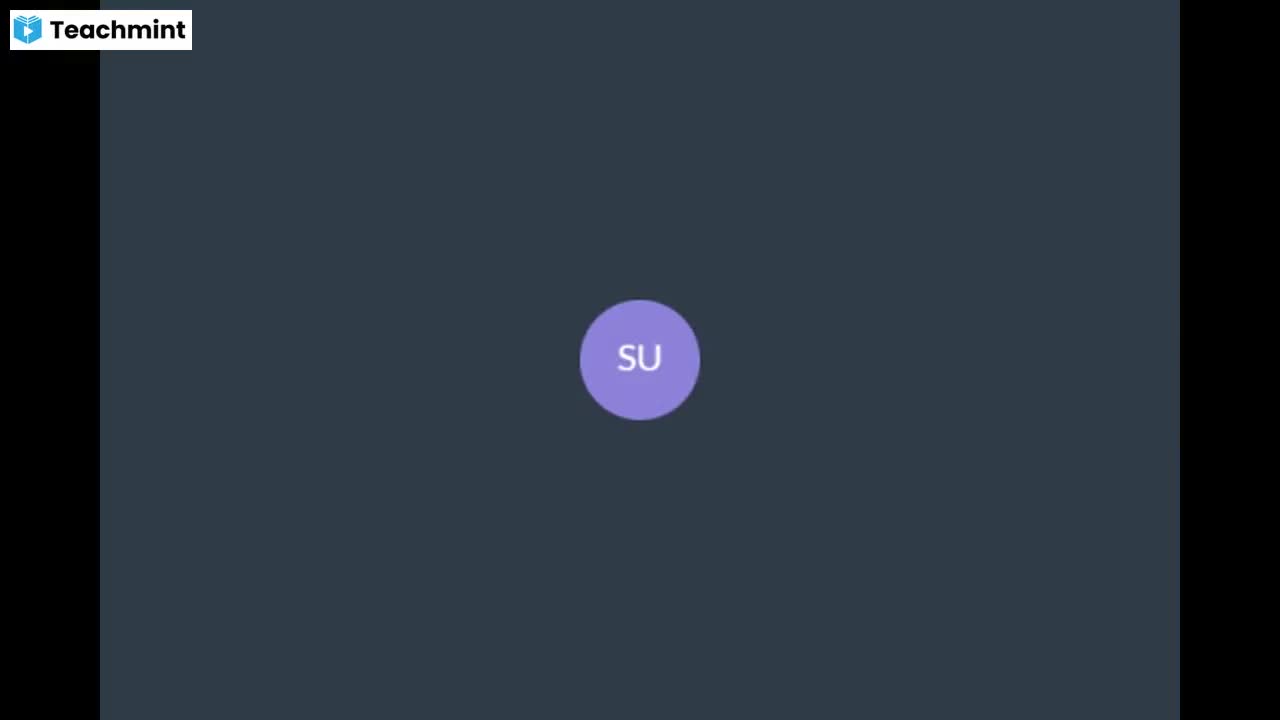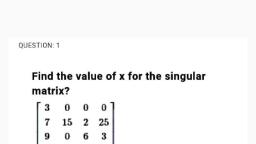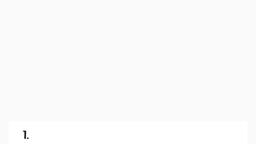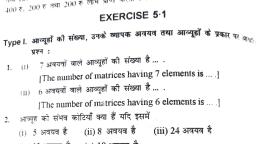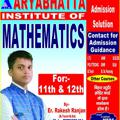Question 1 :
If order of $A+B$ is $n \times n$, then the order of $AB$ is
Question 2 :
If $\displaystyle A=\begin{bmatrix}x &y \\z  &w \end{bmatrix},B=\begin{bmatrix}x &-y \\-z  &w \end{bmatrix}$ and $C=\begin{bmatrix}-2x &0 \\0  &-2w \end{bmatrix},$ then $A+B+C$ is a:
Question 3 :
If $\displaystyle A = \begin{bmatrix} 1 & -2 & 4 \\ 2 & 3 & 2 \\ 3 & 1 & 5 \end{bmatrix}$ and $\displaystyle B = \begin{bmatrix} 0 & -2 & 4 \\ 1 & 3 & 2 \\ -1 & 1 & 5 \end{bmatrix}$, then $A + B$ is
Question 4 :
A $2 \times 2$ matrix whose elements $\displaystyle a_{ij}$ are given by $\displaystyle a_{ij}=i-j$ is
Question 6 :
If $m  \begin{bmatrix} -3 & 4  \end{bmatrix}+n\begin{bmatrix} 4 & -3  \end{bmatrix}=\begin{bmatrix} 10 & -11  \end{bmatrix}$, then $ 3m\ + 7n=$<br/>
Question 7 :
If $A = \begin{bmatrix} 0 & 2 & 3 \\ 3 & 5 & 7 \end{bmatrix}$ and $B = \begin{bmatrix} 1 & 3 & 7 \\ 2 & 4 & 1 \end{bmatrix}$,  if $A+B = \begin{bmatrix} 1 & 5 & 10 \\ 5 & k & 8 \end{bmatrix} \\ $<br/>Find the value of k 
Question 8 :
If $A= \begin{bmatrix} 1 & 2 & 3\end{bmatrix}$, then order is
Question 9 :
If order of matrix $A$ is $4\times3$ and order of matrix $B$ is $3\times5$ then order of matrix $B'A'$ is:
Question 10 :
Suppose $A$ and $B$ are two square matrices of same order. If $A,B$ are symmetric matrices and $AB=BA$ then $AB$ is
Question 12 :
If order of a matrix is $3 \times 3$, then it is a
Question 13 :
If P=$\displaystyle  \begin{bmatrix} 4 & 3 &2   \end{bmatrix}  $ and Q=$\displaystyle  \begin{bmatrix} -1 & 2 &3   \end{bmatrix}  $ then P-Q=
Question 14 :
If$\displaystyle \begin{vmatrix} x & 1 \\ y & 2 \end{vmatrix} $-$\displaystyle \begin{vmatrix} y & 1 \\ 8 & 0 \end{vmatrix} $=$\displaystyle \begin{vmatrix} 2 & 0 \\ -x & 2 \end{vmatrix} $ then the values of x and y respectively are
Question 15 :
The entries of a matrix are integers. Adding an integer to all entries on a row or on a column is called an operation. It is given that for infinitely many integers N one can obtain, after a finite number of operations, a table with all entries divisible by N. Prove that one can obtain, after a finite number of operations, the zero matrix.
Question 16 :
If $A = \begin{bmatrix}1\end{bmatrix}$, then the order of the matrix is
Question 17 :
If for a matrix $\displaystyle A,{ A }+I=O$, where $I$ is an identity matrix, then $A$ equals
Question 18 :
IF A=$\displaystyle \begin{vmatrix} 1 & 0 \\ 1 & 0 \end{vmatrix} $ And B=$\displaystyle \begin{vmatrix} 1 & 0 \\ 0 & 1 \end{vmatrix} $ then A+B=
Question 19 :
If $A= [ 1 \ 2\  3 ]$, then the set of elements of A is
Question 20 :
If $A = \begin{bmatrix}1 & -2 \\ 3 & 0\end{bmatrix}, \space B = \begin{bmatrix}-1 & 4 \\ 2 & 3\end{bmatrix},\space C = \begin{bmatrix}0 & 1 \\ -1 & 0\end{bmatrix}$, then $5A - 3B + 2C =$
Question 21 :
A square matrix $\left[ { a }_{ ij } \right] $ such that ${ a }_{ ij }=0$ for $i\ne j$ and ${ a }_{ ij }=k$ where $k$ is a constant for $i=j$ is called:
Question 23 :
IF A=$\displaystyle \begin{vmatrix} 5 & x \\ y & 6 \end{vmatrix} $ B=$\displaystyle \begin{vmatrix} -4 & y \\ -4 & -5 \end{vmatrix} $and A+B=I then the values of x and y respectively are
Question 24 :
If $A$ and $B$ are square matrices such that $AB = I$ and $BA = I$, then $B$ is<br/>
Question 26 :
A square matrix $(a_{ij})$ in which $a_{ij}=0$ for $i \neq j$ and $a_{ij}= k (constant)$ for $i=j$ is a<br/>
Question 27 :
If $A = \begin{bmatrix}2 & 3 & 4 \\ -3 & 4 & 8\end{bmatrix}$ and $B = \begin{bmatrix}-1 & 4 & 7 \\ -3 & -2 & 5\end{bmatrix}$, Then $\quad A+B = \begin{bmatrix}1 & a & b \\ c & 2 & 13\end{bmatrix}$<br/>Find the value of $a+b+c=$
Question 28 :
If $\displaystyle  \begin{vmatrix} x & y   \\ 1 & 6   \end{vmatrix} $ = $\displaystyle  \begin{vmatrix} 1 & 8   \\ 1 & 6   \end{vmatrix} $ then x+2y=
Question 29 :
The number of all possible matrices of order $3 \times 3$ with each entry $0$ or $1$ is:
Question 30 :
A square matrix A has 9 elements. What is the possible order of A?
Question 31 :
If $A=\begin{bmatrix} { a }^{ 2 } & ab & ac \\ ab & { b }^{ 2 } & bc \\ ac & bc & { c }^{ 2 } \end{bmatrix}$ and ${a}^{2}+{b}^{2}+{c}^{2}=1$ then ${A}^{2}=$
Question 33 :
The number of different possible orders of matrices having 18 identical elements is
Question 34 :
The order of the matrix $A$ is $3\times 5$ and that of $B$ is $2\times 3$. The order of the matrix $BA$ is:
Question 35 :
<p>The possibility for the formation of rectangular matrices in the matrix algebra are</p>
Question 36 :
Suppose $A$ is any $3\times 3$ non-singular matrix and $(A-3I)(A-5I)=O$, where $I=I_{3}$ and $O=O_{3}$, If $\alpha A+\beta A^{-1}=4I$, then $\alpha+\beta$ is equal to :
Question 37 :
A matrix having $m$ rows and $n$ columns with $m=n$ is said to be a 
Question 38 :
If $A = \displaystyle \left[ \begin{matrix} 1 &2 \\ 3& 4 \end{matrix} \right] $, then number of elements in $A$ are
Question 39 :
If $ A= \begin{bmatrix} 1 & 2\end{bmatrix}, B=\begin{bmatrix} 3 & 4\end{bmatrix}$ then $A+B=$
Question 40 :
A word is represented by only one set of numbers as given in any one of the alternatives. The sets of numbers given in the alternatives are represented by two classes of alphabets as in the two matrices given below. The columns and rows of Matrix I are numbered from $0$ to $4$ and that of Matrix II are numbered from $5$ to $9$. A letter from these matrices can be represented first by its row and next by its column, e.g., $'R'$ can be represented by $04, 42$ etc., and $'D'$ can be represented by $57, 76$ etc. Similarly, you have to identify the set for the word 'ROAD'.<table class="wysiwyg-table"><tbody><tr><td></td><td></td><td>Matrix I</td><td></td><td></td><td></td></tr><tr><td></td><td>$0$</td><td>$1$</td><td>$2$</td><td>$3$</td><td>$4$</td></tr><tr><td>$0$</td><td>$F$</td><td>$O$</td><td>$M$</td><td>$S$</td><td>$R$</td></tr><tr><td>$1$</td><td>$S$</td><td>$R$</td><td>$F$</td><td>$O$</td><td>$M$</td></tr><tr><td>$2$</td><td>$O$</td><td>$M$</td><td>$S$</td><td>$R$</td><td>$F$</td></tr><tr><td>$3$</td><td>$R$</td><td>$F$</td><td>$O$</td><td>$M$</td><td>$S$</td></tr><tr><td>$4$</td><td>$M$</td><td>$S$</td><td>$R$</td><td>$F$</td><td>$O$</td></tr></tbody></table><table class="wysiwyg-table"><tbody><tr><td></td><td></td><td>Matrix II</td><td></td><td></td><td></td></tr><tr><td></td><td>$5$</td><td>$6$</td><td>$7$</td><td>$8$</td><td>$9$</td></tr><tr><td>$5$</td><td>$A$</td><td>$T$</td><td>$D$</td><td>$I$</td><td>$P$</td></tr><tr><td>$6$</td><td>$I$</td><td>$P$</td><td>$A$</td><td>$T$</td><td>$D$</td></tr><tr><td>$7$</td><td>$T$</td><td>$D$</td><td>$I$</td><td>$P$</td><td>$A$</td></tr><tr><td>$8$</td><td>$P$</td><td>$A$</td><td>$T$</td><td>$D$</td><td>$I$</td></tr><tr><td>$9$</td><td>$D$</td><td>$I$</td><td>$P$</td><td>$A$</td><td>$T$</td></tr></tbody></table>
Question 41 :
Let $A = \begin{bmatrix} 1 & 0 & 0\\ 2 & 1 & 0\\ 3 & 2 & 1\end{bmatrix}$. If $u_1$ and $u_2$ are column matrices such that $Au_1 = \begin{bmatrix}1\\0\\0\end{bmatrix}$ and $Au_2 = \begin{bmatrix}0\\1\\0\end{bmatrix}$ then $u_1 + u_2$ is equal to
Question 42 :
The matrix $\begin{bmatrix}0 & 1 \\ 1 & 0\end{bmatrix}$ is the matrix reflection in the line
Question 43 :
What is the order of the product $ \begin{bmatrix} x &  y & z \end{bmatrix} \begin{bmatrix} a & h & g \\ h & b & f \\ g & f & c \end{bmatrix} \begin{bmatrix} x \\ y \\ z \end{bmatrix}$ ?
Question 44 :
If A=$\displaystyle \begin{vmatrix} 0 & 1 \\ 2 & 4 \end{vmatrix} $, B=$\displaystyle \begin{vmatrix} -1 & 1 \\ 2 & 2 \end{vmatrix} $,<br>C=$\displaystyle \begin{vmatrix} 1 & 0 \\ 1 & 0 \end{vmatrix} $, then 2A+3B-C=<br>
Question 47 :
The element in the second row and third column of the matrix $\displaystyle \begin{bmatrix}4 &5  &-6 \\3  &-4  &3 \\2  &1  &0 \end{bmatrix}$ is:
Question 48 :
The order the matrix is $ \begin{bmatrix}2 & 3 & 4 \\ 9 & 8 & 7 \end{bmatrix}$ is <br/>
Question 49 :
If $\displaystyle \begin{vmatrix} a & b &0\\ 0 & a & b\\b&a&0\end{vmatrix}= 0$, then the order is:
Question 50 :
If A+$\displaystyle \begin{vmatrix} 4 & 2 \\ 1 & 3 \end{vmatrix} $=$\displaystyle \begin{vmatrix} 6 & 9 \\ 1 & 4 \end{vmatrix} $ then A=

